Stereo Cassette Emulator
Dive into the heart of sonic nostalgia with Wear & Tear, your personal time machine to the golden age of lofi soundscapes. Drawing inspiration from the classic charm of cassette recorders, Wear & Tear is your key to unlocking a treasure chest of low fidelity magic. Experience everything from the gentle flutter of tape warble to the gritty charm of sounds that seem rescued from a forgotten attic tape collection. Wear & Tear brings the quintessential lofi aesthetic right at your fingertips, blending the raw beauty of vintage imperfections with the precision of modern control. Whether you’re weaving dense ambient textures, Embark on a journey through sound where the only limit is your imagination, and discover the boundless possibilities of lo-fi weirdness and beyond.
SHIFT & ALTERNATE FUNCTIONS
Within Wear & Tear, each knob cleverly hides a dual function, unlocking a secondary layer of control to shape your sound with even more precision. To dive into this alternate parameter world, simply engage the SHIFT BUTTON. This action toggles your control from the primary to the alternate function of each knob. However, there’s a smart feature designed to ensure smooth transitions between these parameters. As you start to adjust a knob to access its alternate function, the knob initially operates in a ‘pickup’ mode. This means it will not immediately affect the alternate parameter’s value to prevent any abrupt changes in your sound. Keep turning the knob until it aligns with the alternate parameter’s current setting. During this phase, the Shift LED serves as your guide: it shines yellow, indicating you’re in the pickup phase. Once the knob’s physical position matches the alternate parameter’s stored value, the LED turns cyan. This change signals that you’re now actively adjusting the alternate parameter, allowing for a seamless and intuitive control experience.
CLOCK SYNCHRONIZATION
Wow, Flutter, & Tape Stop timing can all be tied to external clock. Activating the clock synchronization on your Wear & Tear module is straightforward. Simply press the ‘Shift’ button and then the ‘Clock’ button to toggle clock synchronization on or off. The operational status of clock mode is easily discernible through the LED indicators associated with the Wow and Flutter effects: when in FREE mode, these LEDs will display cyan and yellow, respectively. Switching to Clock Sync mode changes the LED colors to green and magenta, signaling that synchronization is active.
While in clock sync mode, pressing the clock button (without the Shift button pressed) doubles as a tap tempo feature. This allows for manual adjustment of the tempo by tapping the button in time with your desired beat. Additionally, the clock input jack accepts gate signals, further enhancing the module’s versatility in syncing with external clock sources or tempo controls.
TAPE STOP
To initiate a Tape Stop effect in Wear & Tear, you can use either the Stop button on the module or an external trigger via the CV gate jack. By default, the Tape Stop effect is active as long as the Stop button is held down or while receiving a continuous high gate signal. Releasing the Stop button or when the gate signal drops to low will gradually return the tape speed to its normal playback rate.
For users who prefer to use latching triggers— where the effect toggles on and off with each press rather than being held—you can easily adjust the module’s response. Simply hold down the Shift button and then press the Stop button. This action toggles the Tape Stop effect to respond to latching triggers, allowing for more versatile control over the effect’s activation.
The ‘Saturate’ function introduces harmonic distortion, emulating the warmth and character of analog tape. The ‘Gain’ control adjusts the output signal level at the final stage of the signal flow, allowing you to control the output volume to balance the saturation’s gain stage. This effect simulates the magnetic saturation characteristic of loud signals recorded on tape, a phenomenon known as MAGNETIC HYSTERESIS LOOP. By increasing the ‘Saturation’ knob, harmonics are introduced into the audio along with light compression. Cranking the saturation will cause the audio to begin to breakup, similar to a preamp of a real cassette recorder. The result is a warm, rich texture reminiscent of classic tape recordings.
LOW PASS FILTER
LOW PASS FREQUENCY / RESONANCE: This dual control features a Low Pass Filter (LPF) with a slope of 12dB/octave, capable of sweeping from 10 to 20kHz. The frequency setting is influenced by both the knob and CV input, which responds at 1 volt per octave. ‘Resonance’ enhances the filter’s cutoff point, creating a pronounced peak and adding character to the filtered sound.
HIGH PASS FILTER: This effect does the opposite of a low pass filter; it permits frequencies above a specified cutoff point to pass while diminishing the lower frequencies. Imagine it as clearing the fog from your sound, removing the rumble and muddiness to highlight clarity and detail in the higher registers. It’s essential for cleaning up a mix or adding definition by letting the highs shine through.
HIGH PASS FREQUENCY / RESONANCE: Similar to the LPF, the High Pass Filter (HPF) also offers a 12dB/octave slope with a frequency range of 0 to 12kHz, adjustable via the knob and CV input. ‘Resonance’ accentuates the cutoff frequency, providing a distinct sonic edge at the filter’s threshold.
WOW
A slow modulation effect that mimics the pitch variations occurring with inconsistent playback speeds, traditionally found in vinyl records or tape machines. This gentle ebb and flow in pitch adds a nostalgic, organic feel to your music, akin to the wavering tones of a distant memory. It introduces a living, breathing quality to your sounds, making them feel more alive. The frequency and depth controls sum the knob and CV inputs.
WOW FREQUENCY: The Wow effect’s LED indicator changes color to reflect play speed adjustments: yellow for deceleration, cyan for acceleration from 0.2 - 5hz. With the clock feature activated, the LED turns magenta for decreasing speed and green for increasing.
WOW DEPTH: Controls the depth of the wow pitch variations, from barely noticeable to a rubbery meltdown.
FLUTTER: A companion to Wow, Flutter is a faster pitch variation effect, reminiscent of the tiny inconsistencies in tape speed found in older cassettes.. This quivering effect infuses your audio with a layer of complexity that can feel anywhere between ephemeral to anxiety inducing. Here as well, the sum the knob and CV inputs control the frequency and depth.
FLUTTER FREQUENCY: The ‘Flutter Frequency’ knob picks up just beyond Wow’s range, allowing you to tune in between 5 - 12hz. allowing gentle, tape-like instabilities or more dramatic vibrato effects. The FLUTMOD control alters the Flutter Frequency by the Wow speed, like an LFO moving the knob.
FLUTTER DEPTH: Controls the depth of the flutter pitch changes, from subtle to utter frequency modulation.
CRINKLE & AGE
Aging or worn-out cassette tapes often lose parts of the audio signal, leading to ‘dropouts’. These manifest as quick, random changes in amplitude and more substantial, periodic reductions in signal strength, lasting several seconds. The ‘Crinkle’ effect recreates this, with the ‘Depth’ control adjusting the intensity of these interruptions, adding an authentic layer of wear to your sound.
AGE: Over time, cassette tapes gradually lose high-frequency content, resulting in a muffled sound. The ‘Age’ effect mimics this aging process through low-pass filtering, effectively reducing the signal’s high-end clarity. `Age` provides a convincingly aged audio character when used in conjunction with ‘Crinkle’,
AGE VARIANCE: ‘Age Variance’ controls the amount of randomization in the cutoff frequency of the filter. Increasing the variance makes the effect more prominent, bordering on pure noise.
CRINKLE / TIME: ‘Crinkle’ adjusts the frequency of audio dropouts, mimicking tape imperfections. ‘Crinkle Time’ sets the duration of these interruptions, allowing for a range from brief glitches to longer interruptions, adding realism or dramatic effect.
CRINKLE DEPTH / VARIANCE: ‘Crinkle Depth’ sets how much volume attenuation occurs while inside of a crinkle, from small volume changes to pure silence. ‘Crinkle Variance’ determines the amount of randomization in both crinkle time and depth.
NOISE
A hallmark of the cassette tape experience is the background hiss or noise inherent to the medium. “Wear & Tear” employs filtered noise, modeled after the spectral characteristics of real cassette hiss, to add this dimension to your audio. The Noise knob allows for precise control over the noise level, up to -36 dB, with the option to completely eliminate the noise by turning the knob fully left. Use the envelope follower to either increase the noise volume (clockwise), or to duck the noise volume (counter clockwise).
NOISE VOLUME: This control adjusts the intensity of the hiss added to your signal, simulating the characteristic noise floor of vintage tape recordings. Turning up the Noise Volume infuses your sound with an authentic tape hiss, enhancing the lo-fi aesthetic and adding texture to your audio landscape.
NOISE ENVELOPE: Positioned at noon, the Noise Envelope maintains a constant volume for the hiss, preserving a steady layer of noise regardless of the signal’s dynamics. Turning clockwise engages the envelope follower, which dynamically increases the noise volume in response to louder signals, adding an interactive element to the noise that mimics the behavior of analog equipment. Turning it counter-clockwise causes the noise to duck, or decrease in volume, as the signal gets louder, creating a cleaner sound during high-intensity passages while still retaining the lo-fi vibe during quieter moments.
EQ
The EQ control on Wear & Tear mimics the equalization profile of 4-track cassette recorders. It’s specifically designed to emulate the tonal shaping capabilities, allowing a single knob to control the amount of EQ applied. The large bump between 40-60hz is due to the proximity of the tape read head to the magnetic tape, which is a quintessential characteristic of tape recording. There are several other spikes and valley along the EQ curve, ultimately leading to an attenuating shelf band starting near 8 kHz.
TREMOLO
The Tremolo effect is ingeniously synchronized to the Flutter speed, creating a cohesive and dynamic interplay between volume modulation and pitch variation. This synchronization ensures that the tremolo pulsations perfectly match the rhythmic fluctuations of the Flutter effect, maintaining a harmonious relationship that brings a fluid, natural feel to the modulation effects.
COMPRESSION
The Compression control on Wear & Tear offers an intuitive, one-knob operation that seamlessly adjusts both the threshold and ratio simultaneously. As you turn the knob clockwise, the threshold lowers, allowing more of your signal to be affected by compression, while the ratio—the intensity of the compression— increases. Whether you’re looking to gently even out the dynamics of a track or apply more aggressive compression for a pronounced effect, the one-knob design streamlines your workflow, allowing you to focus on creating music without getting bogged down in complex parameter adjustments.
DUST
Dust introduces random, sporadic fluctuations across all the effects, adding an extra layer of authenticity and character to the simulated tape sound. It’s akin to the unpredictable, crackly imperfections heard on an old vinyl record or a well-loved cassette tape. These variations add a tactile, lived-in quality to your audio, imbuing it with a sense of history and organic texture that can make digital productions feel more analog and alive.
DUST EFFECT INTEGRATION
The Dust function introduces a layer of random sonic fluctuations, adding depth and texture to the module’s effects by simulating the imperfections found in vintage audio recordings. Here’s how Dust interacts with each specific effect:
SATURATION: Dust creates spontaneous variations in the bias level, adding dynamic warmth and character as if adjusting the tape’s bias setting in real-time.
DEGRADE: It causes erratic changes in the amount of variance, mimicking the unpredictable degradation of tape quality over time for a more authentic aged sound.
WOW DRIFT: Dust introduces random shifts in the Wow frequency LFO, simulating the natural inconsistencies in tape speed that contribute to the wow effect’s organic feel.
FLUTTER TREMOLO: It triggers sudden changes in the depth of the Flutter Tremolo, enhancing the effect with a more varied and lively tremolo texture.
TAPE SNAGS: Dust simulates brief, unexpected moments of pitch warping, reminiscent of the tape snagging on the playback mechanism for an instant before releasing.
NOISE: The effect adds random ‘crinkles’ and ‘pops’ to the noise layer, enriching the background hiss with sporadic artifacts that evoke the sound of an old, well-played cassette tape.
 All Modular Brands
All Modular Brands
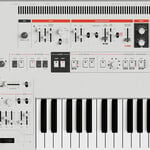 Synthesizers
Synthesizers
 Controllers
Controllers
 Drum Machines
Drum Machines
 Sequencers
Sequencers
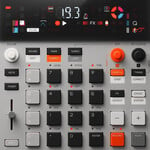 Samplers
Samplers
 Soundmakers
Soundmakers
 DIY
DIY
 Effects
Effects
 Cables
Cables
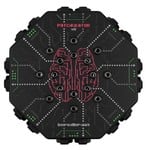 Audio/MIDI
Audio/MIDI
 Video
Video
 Music/Media/Gifts
Music/Media/Gifts
 Accessories
Accessories
 Used
Used
 Vintage
Vintage
 DEALS
DEALS
 Modular
Modular
 Synthesizers
Synthesizers
 Controllers
Controllers
 Drum Machines
Drum Machines
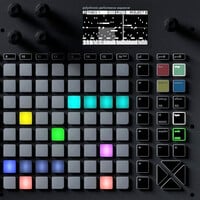 Sequencers
Sequencers
 Samplers
Samplers
 Soundmakers
Soundmakers
 DIY
DIY
 Effects
Effects
 Cables
Cables
 Audio/MIDI
Audio/MIDI
 Video
Video
 Music/Media/Gifts
Music/Media/Gifts
 Accessories
Accessories
 Used
Used
 Vintage
Vintage
 DEALS
DEALS
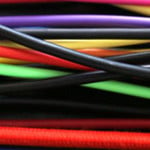 All Patch Cables
All Patch Cables



